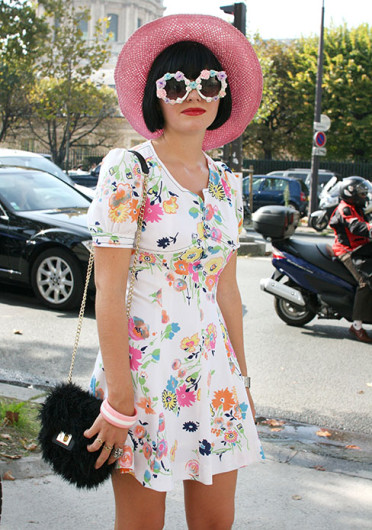
When shopping for vintage clothing, doing a little research can ensure you score an authentic outfit.
Credit: Courtesy of MCT
Vintage clothing is a fun and fashionable way of expression. It’s a thrill to own something no one else has, and vintage pieces are often one-of-kind. Wrapping yourself in an outfit from your favorite decade is like stepping into your own personal time machine. Imagine the social changes your ‘60s maxi-skirt flowed through, or the future-classic songs your ‘80s boots were dancing to.
While finding beautiful pieces from the past is exciting, seeking out authentic vintage clothing can be tricky. Sellers can claim that a piece is aged to jack up the price tag, or a great piece can have a lot of previous owners and its story can get lost. A little research can go a long way in scoring awesome clothes with a rich history.
1. Check the labels
The first thing to do when you see an item that looks vintage is check the label. This is potentially the easiest step to start dating your piece. No label can mean the item was handmade. It is pretty easy to determine this by examining the stitching. Handmade items are difficult to date without speaking to the original owner, but making clothes by hand was much more common in the past than it is today. Handmade items are unique vintage pieces, so no label isn’t always a deal breaker.
2. Look it up
If you have a legible label, type the brand name into a search engine. You can often find out the company’s manufacturing years and what they specialized in and when. For instance, today Converse means Chuck Taylor’s, but in the early ‘70s, their stylish leather rain boots for women were all the rage. A label like Julius Garfinckel & Co. puts your item at least before 1990, because that’s when they liquidated. The Vintage Fashion Guild has an extensive label guide and is a great online resource. It has timelines with pictures showing a brand’s label evolution over its operating years. You can match the label and see the decade or even year the item was manufactured.
3) Don’t be fooled and know your measurements
They say history repeats itself, and fashion does too. Familiarizing yourself with certain a decade’s trends can keep you from overpaying or inaccurately dating your item. Vintage clothes often cannot be tried on or returned, so know your measurements and check the frailty of the piece if you plan on wearing it. No one wants to invest in an item just to have it not fit or fall apart after one use.
4) Talk to sellers
At specialty vintage stores and online shops, most sellers are happy to tell you where they found the item. Perhaps it was a family members’ piece, or they know the original owner and can give you their contact information. How far you want to divulge into the item’s origins is up to your own comfort level and interest, but I have gotten some really great stories simply by asking. And don’t forget to check out your parents’ and grandparents’ closets for vintage pieces too.
The Vintage Fashion Guild has a section of VFG verified members from online shops like Etsy and eBay, to brick and mortar shops in your area. These members have paid for their verification and are held to a code of standards that require them to provide as much information as possible and commit to being honest with buyers. These sellers are passionate about vintage and will go out of their way to answer questions and help you find the perfect piece.
5) Trust your instincts and be yourself
If a seller seems sketchy or an item seems too good to be true, it’s probably the case. Trust your gut if you get these vibes, and don’t let yourself be taken advantage of. Regardless, if a piece speaks to you and you fall in love with it, buy it. Fashion is all about expressing your personality, no matter where the clothes come from.


